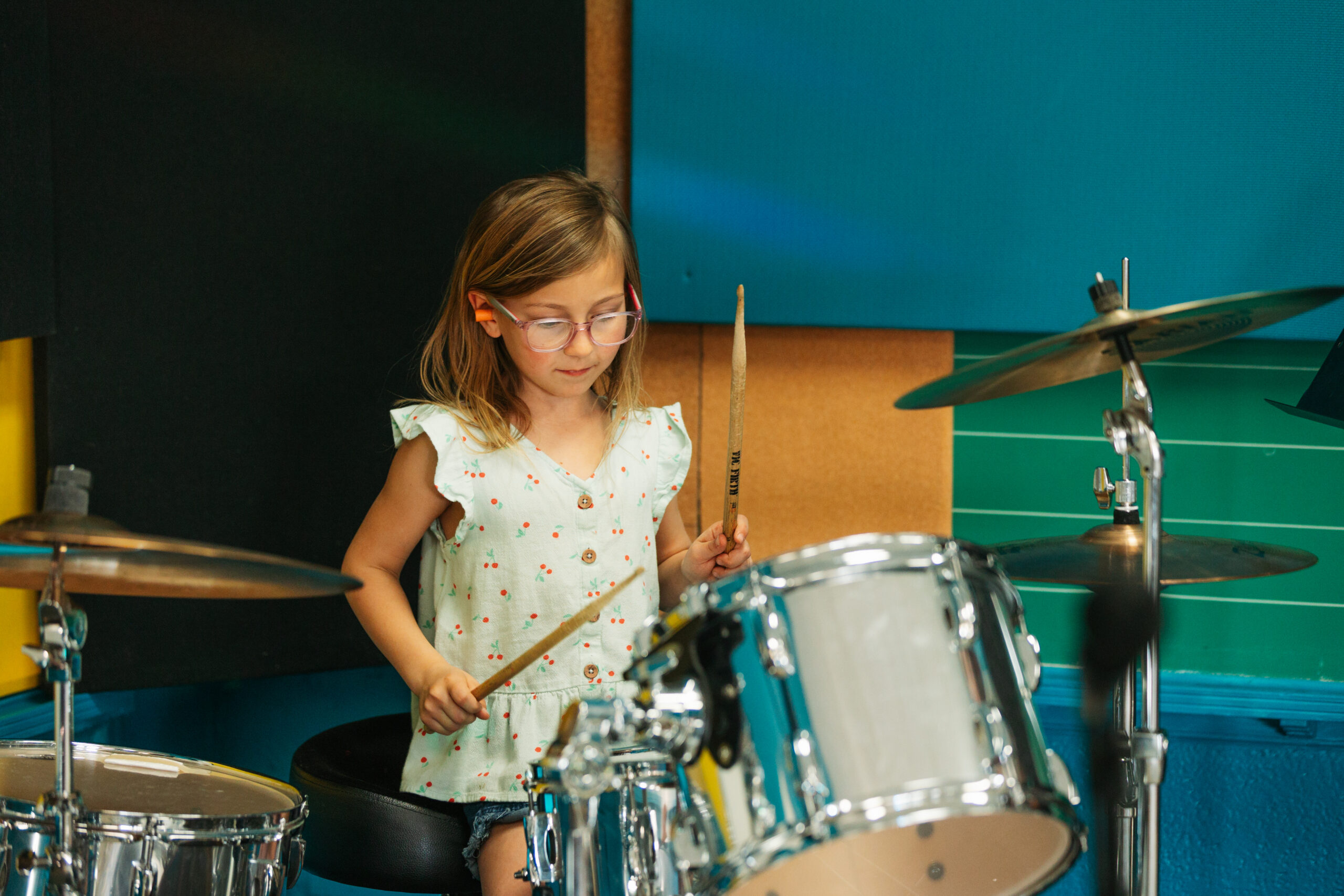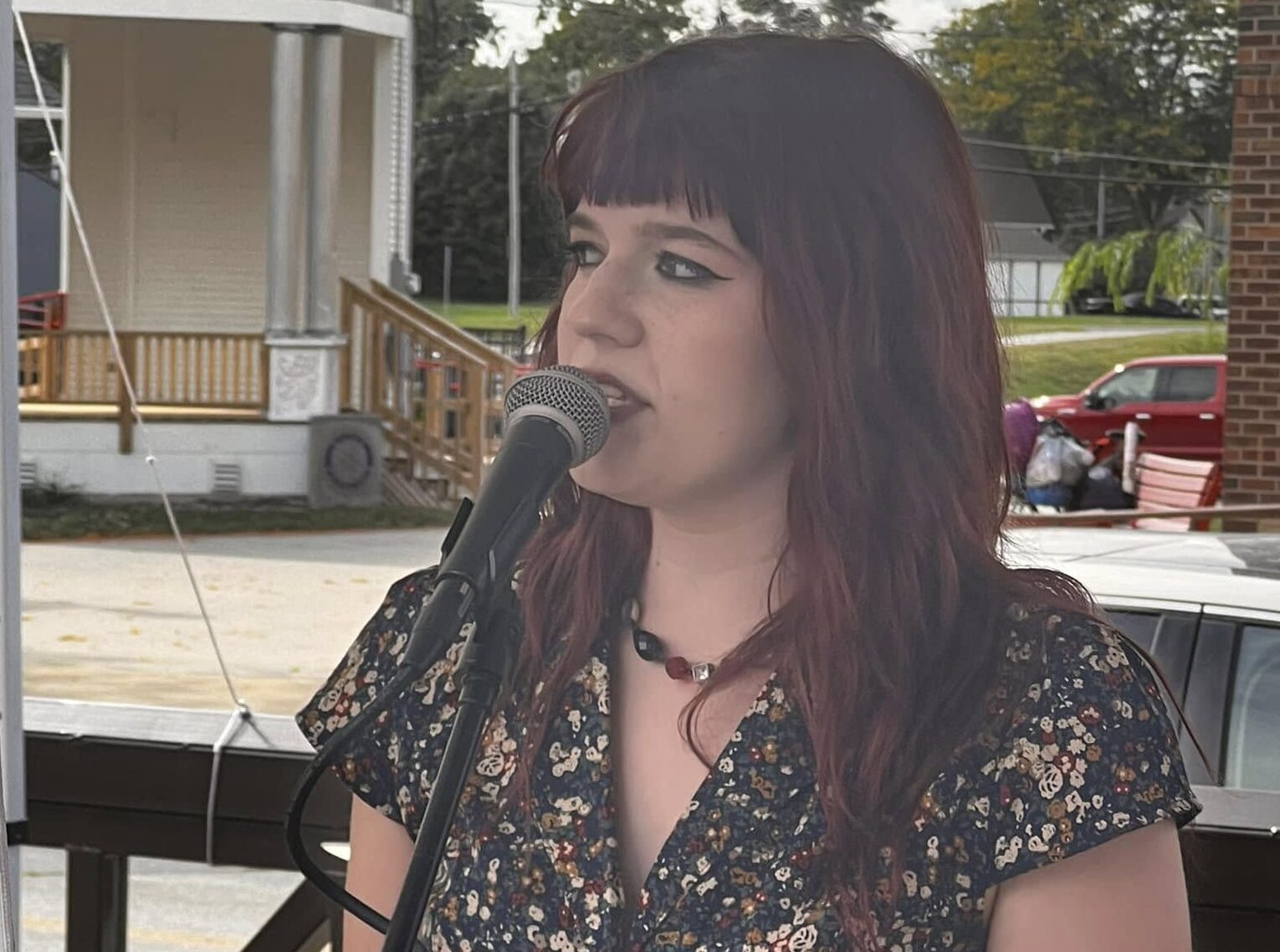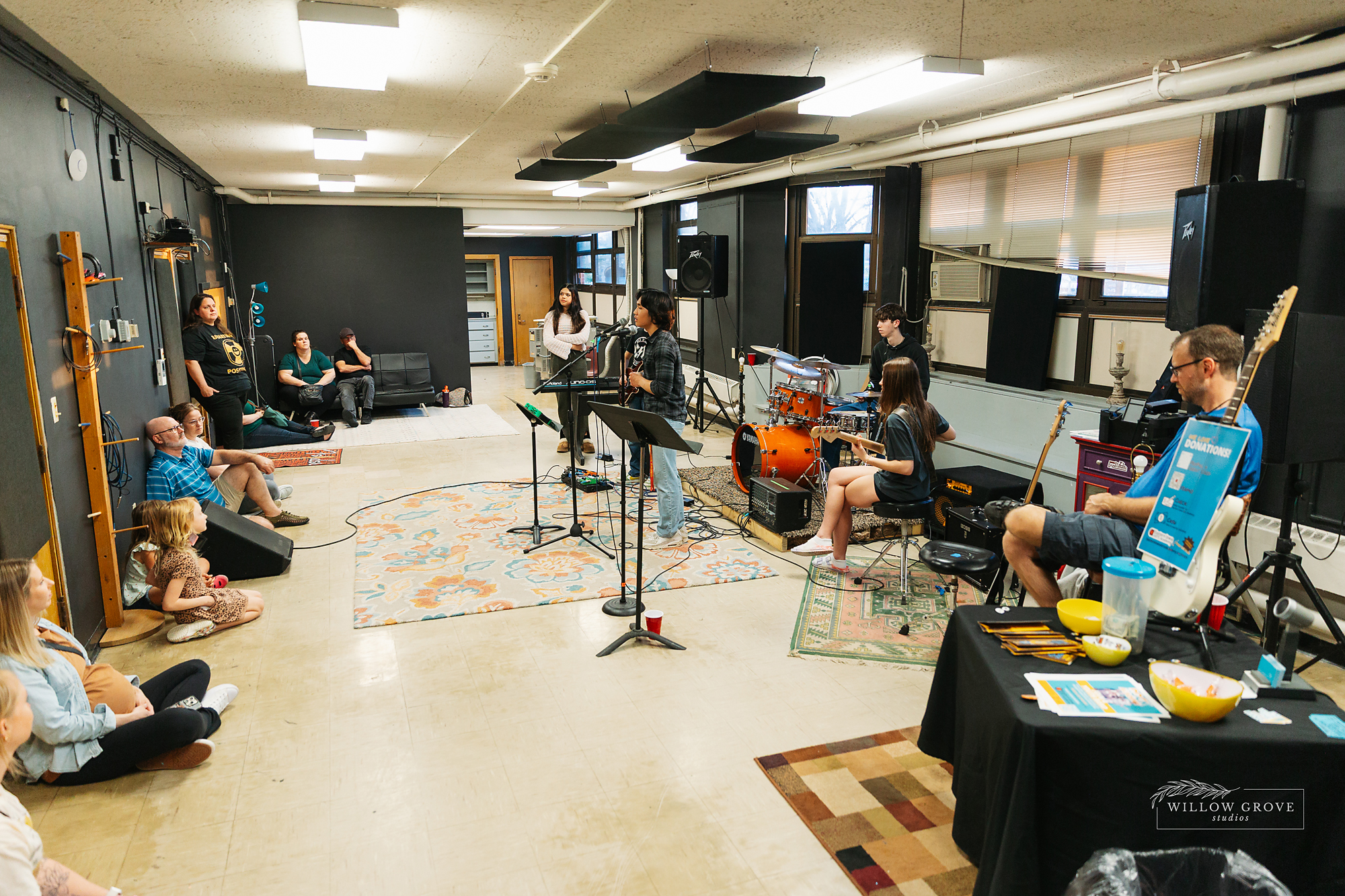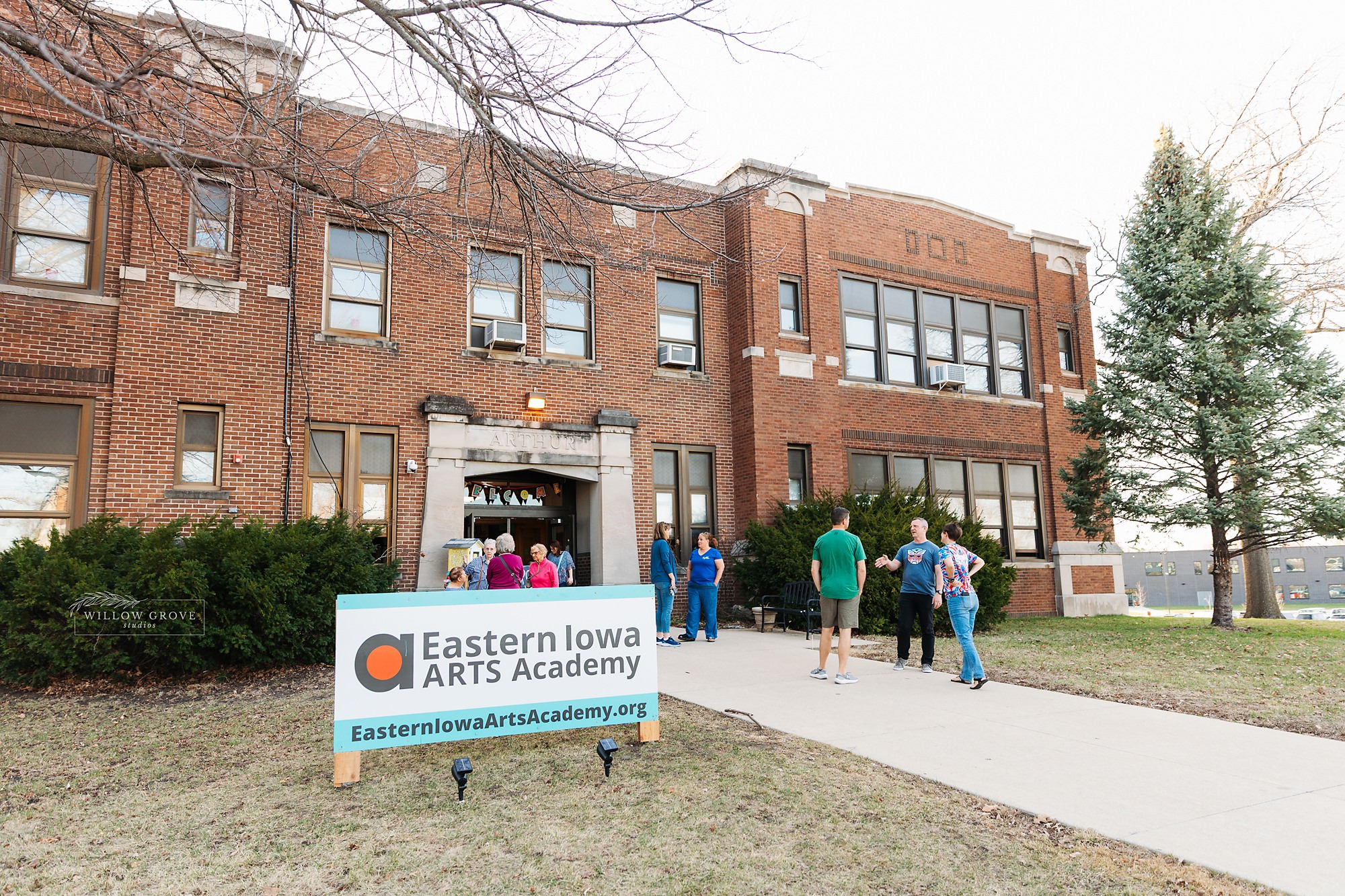Inside a two-story, century-old brick fortress, sun shines through stained glass artworks.
Music serenades down the hall; a koi pond will soon reflect a kaleidoscope of oranges and whites. Magic happens here.
But it isn’t a fairytale—this is Cedar Rapids, Iowa.
Eastern Iowa Arts Academy—a nonprofit offering accessible arts education—recently purchased this historic Arthur Elementary school, which was meant to be demolished.
“It’s like a whole new place … You can unwind. You can be creative. You can be exactly who you want to be here. It’s a safe place,” says Heather Wagner, the organization’s executive director.

The building’s plans include a hallway gallery, open studio spaces, and a community room with a food pantry, clothing closet, and mental health support. Folks can rent out instruments; there’s a sensory room, and a kitchen and gym rental.
Students can sign up for band practice, create in the community maker’s space, or record tracks at the studio.

Music as Healing
One of those students, Zoe Wolrab, is a high school senior involved in three rock bands through the academy. She sings and plays bass guitar, covering artists from Carol King to Toto.
“When I was 14, I was kind of struggling a lot, just focusing in school and wanting to go to school in the first place. And I was also struggling a lot mentally,” Wolrab says.
So their mom suggested getting involved with music. Joining after-school sessions at Eastern Iowa Arts Academy perhaps saved their life, says Wolrab.
“Music is what I want in my life now. This kind of helped me find my career path in the first place. I just want to keep doing this forever.”
The academy is open to students of all ages and abilities, who pay full or partial memberships up to $190 or so a year. By the next three years, organizers plan to have full ADA-accessible programming.
It’s for everybody—by everybody.
“The whole community coming together is working … on making this the arts hub for this area,” Wagner says.
Meeting a Creative Need
When bringing folks back to the academy’s previous building after pandemic restrictions, the problem was clear: The demand was just too high.
“They came back in droves,” Wagner says of the students. “The need for expression in the arts was huge.”
Classes started racking up waiting lists and students wanted more private instrument lessons. The academy was running out of room. With the help of a cohort grant through the Iowa Arts Council, the team secured the school for $260K.

The building, though largely untouched save some painting, has transformed into an arts refuge. Wagner says people can come just as they are: There’s no need to put on a mask, empty your wallets, or be uncomfortable.
She just wants people to feel restored, much like the building’s newfound purpose.
“Art can do what it’s supposed to do. People can kind of bury themselves in the art,” Wagner says. “You can just heal. And that’s what it’s all about.”
